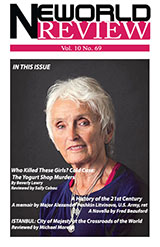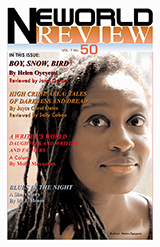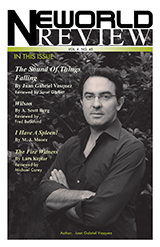Letter to the Reader:
You’d think that after writing this column to you, the reader, 75 times, that I would run out of things to say. But life goes on, and things happen. For example, there is the non-stop breast beating coming from both the hard-nose liberal media, and the lone Fox News concerning our President and his arch foes, the liberals; with name calling, and each side sticking their tongues out at each other.
This is also a time when entertainment mogul after mogul have been caught using their great power to rape and sexually intimidate both men and women, especially in the movie business. As someone who lived for years in Los Angeles and has covered that business as a journalist, and taught film history as a university professor, I know first-hand that when a mogul said to someone, “You will never work in this town again,” it was not an idle threat.
What I find interesting is this “casting couch” has been going on since 1915 when the present-day movie industry began in Los Angeles. Young, attractive women and men from the cornfields, big city slums, and middle-class small towns, and even upper-class environments, like the one the great Katharine Hepburn, a Bryn Mawr graduate, grew up in, came, hoping that their good looks and acting talent could make them famous and rich.
What I find interesting is, why now? And why is it that Hollywood friendly liberal media, like The New Yorker and the New York Times, finally dropped a dime and blew the whistle on what had always been going on in Show Biz.
Now that is something to wonder about.
I have my own theory. For years I have been ranting (mainly to myself) about the fact that almost every university in the country now offers a worthless MFA in film. All I see is $300,000 in student debt for a degree that offers nothing. Hollywood is a rigged system, and always has been. But now I think that all those MFA’s that trekked to Los Angeles, and left pissed off, couldn’t wait to tell the world what really goes on in Hollywood, which finally forced the Liberal press to act.
But who knows?
And there are still other things to wonder about since I last wrote to you. For example, I can’t get over the giant spaceship that private enterprise developed. I was in a state of awe as I watched two of the booster rockets come back and successfully land on landing pads. That was a sight to behold. Bravo to Elon Musk and the folks at Tesla.
I hope with the next issue that there will be other wonders I can talk to you about. Meanwhile, once again, thank you for clicking on to us at Neworld Review.
Fred Beauford
Editor-in-Chief
Publisher
This above book is a strong, compelling story of an ordinary middle class, Italian-American woman, overcoming extraordinary problems.
This non-fiction narrative begins with naïve hope, joy and high expectations for the future. Soon, reality sets in. Dysfunctions by the name of alcoholism, gambling and spousal abuse played their ugly hands.
The proverbial icing on their cake of misfortune comes when Mary Ann’s husband is destined to become the recipient of a heart transplant.
This Month's Articles
REVIEWING
The Perfect Nanny
By Leila Slimani
Translated by Sam Taylor
Reviewed by Jane M McCabe
When I read Lauren Collin’s column, “Letter From France” in the January 1, 2018, New Yorker about the literary sensation Leila Slimani, a 35 year-old Moroccan woman (and long-time resident of Paris), has become in France, with the publication of her second novel, Chanson Douce (Sweet Song), soon to be published in the United States under the title The Perfect Nanny, I knew this was book I must read.
Slimani has won the Concourt, France’s most prestigious literary prize, which counts its laureates Proust and Malraux. More often the prize goes to middle-aged white men, so the committee had broken its history, making Slimani the new face of French literature
When I was at the main branch of the Los Angeles Library downtown a few days later, I was able to put a reserve on the soon-to-be-released book, and thus became the first person in Los Angeles to read the library copy.
It’s a slender volume—only 278 pages. The Perfect Nanny is more than a psychological thriller—it depicts the lives of an ordinary, professional couple, Paul and Myriam, their two children, Mila and Adam, and their nanny, a frail-looking white woman named Louise. Ultimately, the nanny kills the children. The New Yorker article says that Ms. Slimani was inspired by a news item about a New York nanny who killed two children in her care.
The book begins with one of most memorable lines in all of literature: “The baby is dead.”
Slimani’s style is to write short, factual sentences that punctuate a given situation and accumulate the tension. She tells a dark story in a rather bleak, reporter-like style (think Hemingway or Hillebrand), describing Paul and Myriam’s decision to hire a nanny—Paul says they will hire no one “too old, no veils, no.....Read More
PORTFOLIO
Portfolio: Suzanne Gagnier
My Wondrous World of Seeing
I would like to introduce myself.
My name is Suzanne Gagnier. I had the opportunity to be the photographer for Neworld Review in the Portfolio for Vol 5 No 34, highlighting the US Open of Surfing in Huntington Beach, California.
I have been taking photographs since I was ten years old. My father was a cameraman. He started as a newsreel cameraman in Montreal, later worked on film and television shows, like The Art Linkletter Show and Steve Allen Show and Streets of San Francisco and Knots Landing and Chinatown. On a trip to Connecticut he gave my brother and me a Kodak Instamatic camera to share.
The first time I looked through that lens and snapped a shot I was taken to THAT PLACE! the one where everything you see changes your perception. The opportunities were endless. When I have my camera in hand I feel a sense of adventure. "The World is Art in Motion," just waiting for someone to take notice.
Every moment tells a story, not only when travelling but in all.....Read More
REVIEWING
Chester B. Himes: A Biography
By Lawrence P. Jackson
Reviewed by Robert Fleming
When I arrived in New York City as a young writer in the 1970s, one of the major events of my fledgling career was meeting the legendary Chester Himes at the apartment of poet Quincy Troupe. My great friend, Verta Mae Grosvenor, invited me along for the afternoon meeting. Himes, still recovering from an illness, spoke softly and sparingly. His wife, Lesley, stood by his side. I hung on his every word as he talked about Baldwin, Ellison, writing, publishing, and the American racial climate.
Later, Himes would tell an interviewer that he considered himself, “an evil, highly sensitive, unsuccessful old man, but not an American Negro in the usual connotation of the word.”
This new Himes biography, painstakingly researched by Lawrence P. Jackson, a John Hopkins Bloomberg Distinguished Professor of English and History, sets those doubts to rest. His peerless digging into the writer’s life spanned probing in the three library archives housing Himes’ papers, along with journals and letters with such literary figures as Sterling Brown, publisher Alfred A. Knopf, patron Carl Van Vechten, Langston Hughes, Ralph Ellison, and Richard Wright.
“If you’re looking at African-American men, Himes, to me, is the singular figure that helps us understand many of our pressing challenges,” Jackson recently told John Hopkins Magazine. “People that are.....Read More
POEM
All Souls’ Day
A Poem by Sandra Kohler
Thursday, early November. Tonight there’ll be
candles for All Souls’ Day, the day of the dead.
On Tonawanda Street, yesterday’s rain and
wind bring down a scatter of gold to pave
the gray macadam, echo the gingko gleaming
overhead along the street’s alley of trees.
Underfoot gingko leaves coat the sidewalk,
along with their reeking pulped fruit. I walk
here on beauty and filth, past shabby gardens,
their flush of late roses like.....Read More
REVIEWING
Manhattan Beach
By Jennifer Egan
Reviewed by Jane M McCabe
In Chapter 20, page 288, of Manhattan Beach, Jennifer Egan writes, “…Dexter knew what action he must take.”
This provocative line comes on the heels of Anna and Dexter Styles single lovemaking episode, which “in forty-one years of his life, it had never been better than this,” and after Dexter tried to speak to his father-in-law about his desire to go straight (he is a high-level gangster in charge of numerous night clubs in New York City.) He is told that it would be nearly impossible after such a long time in “the business.” We also learn of Arthur Berringer’s stipulation that before he consented to let his daughter Harriet marry Styles, he had to agree to be faithful to her, a promise he had largely kept, except for this compelling encounter with Anna.
The action that Styles knew he must take was to return by ship to the place off the coast of Staten Island, where, years ago, Anna’s father, Eddie Kerrigan in chains (he was in Styles’ employment as an ombudsman) had been pushed overboard. Styles assumed Eddie had died and his remains would be found at the bottom of the sea. Anna, determined to find her father, was dressed in her deep-sea diving “dress” (she was the first female diver to repair ships that would help American win Word War II.) When she goes down to look for her father, all she finds is his gold watch.
This is because Eddie was something of Houdini and managed to free himself and swim to the surface and to the beach, where a kind-hearted fisherman dragged him home and warmed his body. Eddie took no changes after this—he joined a merchant ship and spent the next twenty years traveling the seas…
Manhattan Beach was something of a puzzle to me, a puzzle I.....Read More
ESSAY
To Fight Against This Age: On Fascism and Humanism
By Rob Riemen
An essay by Michael Moreau
A Philosopher Looks at What’s Worth Saving of Western Culture
When I was just sixteen and like a lot of children of the 1960s in that I was seeking truth, I attended a lecture by the social philosopher Paul Goodman, whose Growing up Absurd seemed to have predicted the youth revolution to come later in the decade—at the massive Unitarian Church on 8th Street in Los Angeles, which was then a center for progressive thought and politics.
I recall that the title of his talk was “On Being a Great Power,” and the gist of his argument was that being a great power was antithetical to being a good country, and that being a good country meant being an active democracy with vibrant civic involvement, prizing education and concomitantly, cherishing culture, promoting the general welfare, and being a good neighbor—using military might only when absolutely necessary for self-protection.
In short, Goodman’s ideal country, and he was an unfailing idealist, would embody the promise of the Enlightenment—a promise that he believed was incompatible with the wars of aggression in which the U.S. was then embroiled. But, he further contended that being a great power in the world was not a good thing and could only exist by forfeiting a claim to righteousness.
Dutch philosopher Rob Riemen takes a look at an idea not far from that of Goodman’s that night so long ago in Los Angeles, in his new book To Fight Against This Age: On Fascism and Humanism. The focus of his book is Europe—more specifically, the idea of Europe which he says has a particular moral code worth preserving even as it diminishes as a world power militarily and economically. But one cannot overlook recent events in the U.S., a nation founded on the precepts of the Enlightenment, when considering.....Read More
ESSAY
Richard Wright, Ralph Ellison and A Jug of Ancestors
An essay by Jerry Ward
It is tempting to agree with Arnold Rampersad (Ralph Ellison: A Biography, page 403) the essay "The World and the Jug" is perhaps Ralph Ellison's "richest apologia for his life as a writer who happened to be black, as well as for the Negro culture that had made him….As such, it also defends all American writing that seeks to move beyond ethnicity and toward national or universal values."
Rampersad's clever choice of words renders the temptation less enthralling. Ellison's apologia is written in a defensive posture, a position which Lance Jeffers clearly described a few decades ago. Read his seminal essay "The Death of the Defensive Posture: Toward Grandeur in Afro-American Literature" in The Black Seventies (Boston: Porter Sargent Publisher, 1970), edited by Floyd B. Barbour. One part of Ellison's essay was published in The New Leader, December 9, 1963. Why 55 years ago did he "happen to be black"? And, as if their minds have never been energized and dignified by a reading of Langston Hughes's classic "The Negro Artist and the Racial Mountain," why do some writers in 2018 "happen to be black"?
Do Bernard Malamud, Martha Nussbaum, and Norman Mailer "happen to be Jewish"? After all, they deserve an equal opportunity to exist in the twilight zone of "happen."
In 2018 it’s convenient to believe we are all "made" of cultural circumstances, which include racial and ethnic identity positioning. Those circumstances are at once American and something that evades a name. When we think of American writers, we ought to note Amy Tan is made of Chinese culture and Rudolfo Anaya is made of a culture best described as Spanish imperialism.
We are made of histories we accept or.....Read More
FILM
#Metoo at the Movies: Scenes that Should Go Away with the Wind
By Jan Alexander
Movie depictions have a subliminal effect upon the way men and women interact in reality; the mainstream media both reflects and effects society’s expectations according to gender. As a jaded optimist who believes that bad things like sexism, racism, and inequality tend to take on different tones and rhetoric over time rather than disappearing, I can foresee a wave ahead in which a few more women make the creative decisions in Hollywood, leading to more female characters who do amazing and unexpected things. (Like Wonder Woman saving her leading man’s life.)
At the very least, I can imagine a period of enlightenment in which the men who make movies recognize that it’s bad for verisimilitude, box office, and possibly their own careers to have any woman character: 1) ask her male sidekick “what should we do now?” 2) fall in love with a man who points a gun at her, rapes her, or thinks he’s smarter than she is, or 3) jump into bed with someone she barely knows or doesn’t especially like just because the script wants her to be naked.
Then there might be a backlash. The path of art, presidential elections, and female movie characters has always zigzagged. Norma Shearer played a woman who liberated herself in The Divorcee (1930) and again in Strangers May Kiss (1931), and there were plenty of hilarious wise-cracking gals (Myrna Loy, Katherine Hepburn, Rosalind Russell, the early Ginger Rogers and Jean Harlow) around the same time Shearer played the role she’s best remembered for, the sappy cheated-on society wife in The Women (1939) who just wants her husband back.
So, I started thinking about setting some things right while the woman’s point of view has Hollywood’s eyes and ears.
There are so many beloved classics that live on, timeless in their overall view of humanity except for the parts that we might shrug off as products of their times--but please, let’s not. Someone should have known better. Was Gone with the Wind a product of 1930s racism? Of course, but just a few years before Margaret Mitchell wrote the novel that immortalized the South as it never actually was,.....Read More
MAN ABOUT TOWN
“There’s a Party Going On!”
By M. J. Moore
One of the most irresistible original soundtrack songs to emerge in recent decades popped off the screen in 1996, when a cinematic romp called That Thing You Do! had its premiere. It’s a film directed by (and co-starring) Tom Hanks, and it’s also a love letter to Pop Rock Americana circa 1964.
In other words, the songs giving the film its kick sound like “the early Beatles.”
One particular song, given a “Live!” performance before a screaming crowd midway through the film, has both a catchy title, “Dance with Me Tonight” and a key line, repeated more than once: “There’s a party going on!” It is a song to snap and dance to.
That song echoed in my mind as a party got underway last July, in New York City, at 241 West 14th Street. The bash was at The Norwood Club, a deliciously private spot inside a five-story townhouse in Greenwich Village. It was a hot, sultry Wednesday night.
But it wasn’t just the weather that was steamy.
The party going on was to celebrate of the latest issue of a brash, sassy, sensually informed and female-centric new periodical called HoneySuckle Magazine. Brazen photography artfully highlighting the human body? Check. Deep interviews and intelligent writing about coming-of-age issues, amid social and sexual upheavals? Check. A gorgeous cover photo of Kirsten Dunst in a killer bikini? Heavy check.
HoneySuckle Magazine’s launch party for its 5th issue—dubbed the “HERS” issue, because even more than usual, the magazine’s themes and variations are distinctly.....Read More
SHORT STORY
Rockets
A Short Story by Rebecca Cuthbert
We ate charred hotdogs and yesterday’s leftovers at the picnic table on Grandma’s covered patio. It smelled like rain even in bright weather. Rot had seeped into the thin layered wood of the awning and up the legs of the paint-chipped table. I chewed my potato salad carefully, spitting pimentos onto the cement floor, but only when my mother wasn’t looking. It was July 5, 1987.
My brother Ben saw me turn and spit. He grinned. “Lolly’s spitting out food!” he yelled, gleeful to be the tattler. He reached into the metal chest cooler behind him and fished a can of root beer from the ice-flecked water.
Our mother stopped talking to Aunt Rena and turned to me. Then she scanned the ground and saw the dozen or so pimentos freckling the cement. “Lorena Grace. If you don’t act like a big girl you will not go to the beach with your cousins,” she said, her mouth turned down in the way we had all gotten used to.
Sometimes she called me her big girl and sometimes she accused me of being little; the conflicting statements left me wondering which one I should want to be. That day, I almost opened my mouth to say so, or some child’s version of that. I shut it and looked at my plate instead. I knew she wasn’t done so I waited, trailing the tines of my plastic fork through the ketchup and mustard smothering my hotdog, swirling one condiment into the other until I had a Spirograph of red and orange and yellow.
“Is there something wrong with the potato salad I spent so long making yesterday morning?” She stressed the word wrong, and for whatever reason, morning, too.
I stopped making art. No answer would be the right one. I knew this even at six years old. So I shoved another bite of dry potato salad into my mouth and chewed, not hunting out the sour-tasting pimentos with my tongue, mashing it together and swallowing. I choked down three bites before she turned back to my Aunt Rena, satisfied that I learned my lesson.
My mother and aunt resumed their discussion of my father, who had stayed inside with my uncles to watch a baseball game on television. Between crunching black hotdog skin and listening to Ben chug soda, I thought I heard my mother whisper.....Read More
REVIEWING
Wildlife in Wild Lands: Photography forConservation in Southern South America
By Laura Crawford Williams
Reviewed by Rebecca Shpektor
Wildlife Photographer Brings Awareness to Importance of Animal Conservation through New Book
You need to hear about this photographer's wild life. Wildlife photographer Laura Crawford Williams is gentle as a lamb in person, but her photos roar with intensity and beauty. Williams has recently attended the 2018 Safari Night Ball benefiting Young Adventurers, Inc., which was hosted by honorary chairs, Jim and Elizabeth Trump-Grau. As the photographer mingled among the lions, tigers, giraffes and monkeys displayed around Mar-A-Lago, she was able to put her ten years of collaborative work on display.
Williams most recently released Wildlife in Wild Lands: Photography for Conservation in Southern South America to commemorate her career. The book includes six chapters of wildlife photography with captions and a backstory chapter with images and stories of her superb work in the field. The project is the result of eight years of.....Read More
REVIEWING
SOUL SURVIVOR: A Biography of Al Green
By Jimmy McDonough
Reviewed by M. J. Moore
How can anyone’s permanent mark on popular musical culture be assessed? Sales of albums or CDs used to be one sure way of measuring a legacy, but in the Internet Age of iPod downloads and endless free streaming of all content, purchasing CDs or albums is a throwback to a bygone era. And yet, here is an interesting tidbit.
During the two presidential campaign years when Barack Obama was on the scene (first as a trailblazing candidate in 2008; and again when running for re-election in 2012), there were two powerful reminders of Al Green’s musical legacy, and those reminders were transmitted to the masses in two entirely separate ways.
Quickly: In 2012, at a major campaign appearance, President Obama did more than deliver a speech – he sang a few words into the microphone, offering a melodious and nicely phrased musical flourish with merely three words: “Let’s stay together!”
The audience swooned. Everyone seemed to recognize the song. It’s one of those classic ballads that’s still heard on radio shows devoted to Classic Rock and varied specials like “Saturday at the Seventies.” And the kicker is that while President Obama did a fine job of echoing the famous recording by 1970s soul singer Al Green, there’s no doubt that the original recording is what filled everyone’s imagination.
Rewind a little bit more: In 2008, when the Obama vs. Hillary campaign was stoking the nation, the summer of ’08 was lightened up a bit by the first movie rendition of the hit TV show Sex and the City. In one heartrending.....Read More
POEM
Brothers
A Poem by Laurinda Lind
I am losing
the vague dread,
Vincent wrote
Theo from
the asylum
where the others
who were brilliant
in bad ways
let their
unstrung stars
loose all over
the ceiling
at night.
Various Lunatics
and Madmen,
he called
the.....Read More
Neworld Review
Vol. 11 No 76 - 2018
Editor-in-Chief
/Publisher
Fred Beauford
Online Managing Editor
Richard D. O'Brien
Associate Editor
Jane M. McCabe
Fiction Editor
N West Moss
Editor-at-Large
Jan Alexander
Senior Editors
Molly Moynahan
Herb Boyd
M.J. Moore
Janet Garber
Director of Photography
Kara Fox
President
Alexis Beauford
Contributing Writers
Larry Baker
Todd Steven Burroughs
Michael Carey
Sally Cobau
Steve Fisch: Portfolio
Robert Fleming
Michael Moreau
Emily Rosen
Jane Smiley
The Neworld Review is a publication of Fred Beauford, 47 Stewart Ave,
Irvington, NJ. 07111.
Material in this publication may not be reproduced in whole or in part without permission. Opinions expressed by contributors do not necessarily reflect the views of the publishers.
Manuscripts should be accompanied by a self-stamped envelope. Online submissions are accepted. Contact Us
Neworld Review cannot be held responsible for unsolicited photographs or manuscripts.
All correspondence to:
Fred Beauford
Editor-in Chief/Publisher
Neworld Review
47 Stewart Ave,
Irvington, NJ 07111
Contact Us
Archived Issues


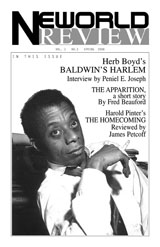











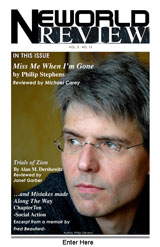

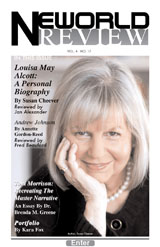











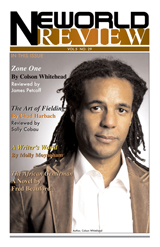











Digital favorites
- Non Gamstop Casinos UK
- Casinos Not On Gamstop
- Mejores Casinos Online
- Siti Casino Non Aams
- Casinos Not On Gamstop
- Gambling Sites Not On Gamstop
- Non Gamstop Casinos
- Online Casinos UK
- Best Non Gamstop Casinos
- Casino En Ligne
- UK Casinos Not On Gamstop
- Best Casino Sites Not On Gamstop 2025
- Best Non Gamstop Casinos
- Mejores Casas Apuestas Online
- Siti Casino Online Non Aams
- Top UK Casino Sites
- Meilleur Casino En Ligne Fiable
- Meilleur Casino En Ligne
- Non Gamstop Casino
- Casinos Not On Gamstop
- Slots Not On Gamstop
- Non Gamstop Casino
- Casinos Not On Gamstop
- Siti Casino Online Non Aams
- Lista Casino Online Non Aams
- Siti Casino
- Meilleur Casino En Ligne En Belgique






